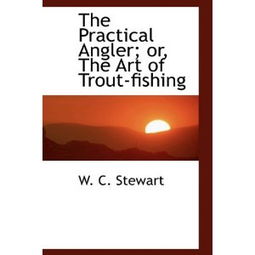The Art of Angling: Techniques and Power for Effective Fish Threading
The world of angling is a blend of patience, skill, and a deep connection with nature. Among the many techniques that anglers master, one stands out for its finesse and challenge: the art of threading a fish through the hook. Whether you're targeting species like bass, trout, or pike, understanding how to apply the right amount of force is crucial for a successful catch. In this article, we'll delve into the intricacies of fishing techniques and how to effectively apply force when it comes to hooking a fish.
Understanding the Basics of Hooking a Fish
Before we dive into the specifics of how to apply force, it's important to understand the basics of hooking a fish. The goal is to present the bait in a way that entices the fish to bite, and then to set the hook smoothly and securely. Here are some key points to consider:
Timing: The key to successful hooking is timing. You need to be ready to set the hook the moment you feel a tap or a pull on the line. This requires a keen sense of anticipation and a quick reaction.
Bait Presentation: The way you present your bait can greatly influence whether a fish will bite. This includes the speed, direction, and manner in which you move your lure or bait.
Hook Size and Type: The right hook size and type for the species you're targeting is essential. A hook that's too small may not hold the fish, while one that's too large may spook the fish or prevent it from taking the bait.
The Importance of Power in Fishing
Once you've got the basics down, the next step is to understand how to apply the right amount of force when setting the hook. This is where the concept of power comes into play. Here's why power is important:

Securing the Catch: Applying the right amount of force ensures that the hook is set securely in the fish's mouth. This is crucial for a successful catch and for minimizing the risk of losing the fish.
Reducing Stress on the Fish: Too much force can cause unnecessary stress to the fish, potentially leading to injury or death. The right amount of power ensures a humane catch.
Enhancing the Experience: The act of hooking a fish is part of the thrill of angling. Applying the right amount of force can make this moment more enjoyable and memorable.
How to Apply Force Effectively
Now that we understand the importance of power, let's look at how to apply it effectively:
Use a Rod with the Right Action: The action of a fishing rod refers to how it bends when pressure is applied. Choose a rod with the right action for the species you're targeting. For example, a fast-action rod is ideal for setting the hook quickly, while a slow-action rod is better for more delicate presentations.
Practice the Hook Set: Before you head out on the water, practice the hook set on a stationary object. This will help you get a feel for the amount of force required.
Use a Quick, Aggressive Motion: When you feel a bite, use a quick, aggressive motion to set the hook. This motion should be sharp and decisive, but not overly forceful.
Maintain Control: As you apply force, maintain control of the rod. The rod should be in a position where you can feel the fish's resistance and adjust your force accordingly.
Adjust for Different Fish Species: Different fish species may require different amounts of force. For example, bass may require a harder hook set, while trout may require a more delicate approach.
Conclusion
The art of angling is a skill that takes time to master, and the technique of hooking a fish is no exception. By understanding the basics of hooking, the importance of power, and how to apply it effectively, you'll be well on your way to becoming a more skilled angler. Remember, the key is to balance timing, bait presentation, and the right amount of force. With practice and patience, you'll be threading fish through the hook with ease and enjoying the full experience of angling.












